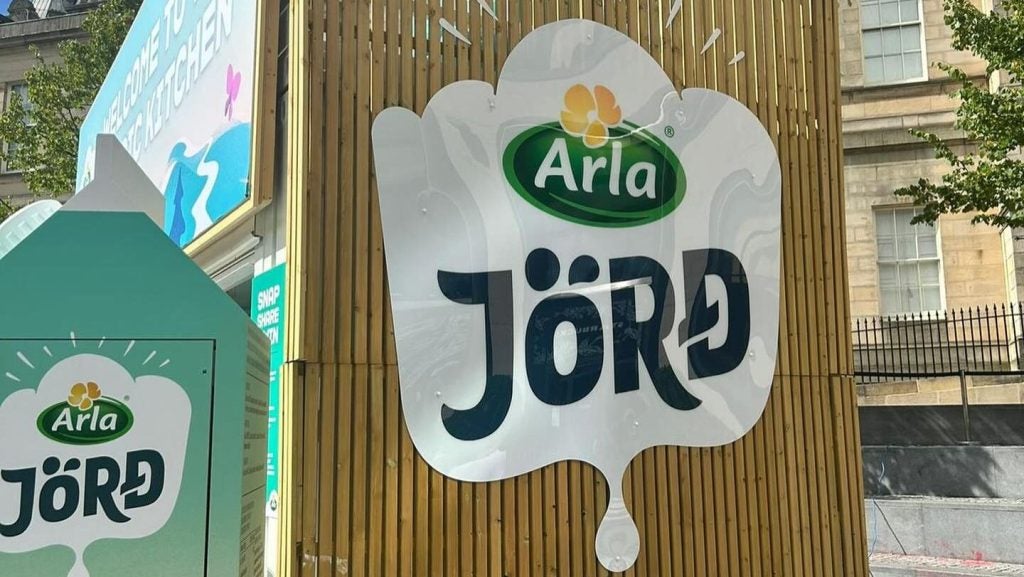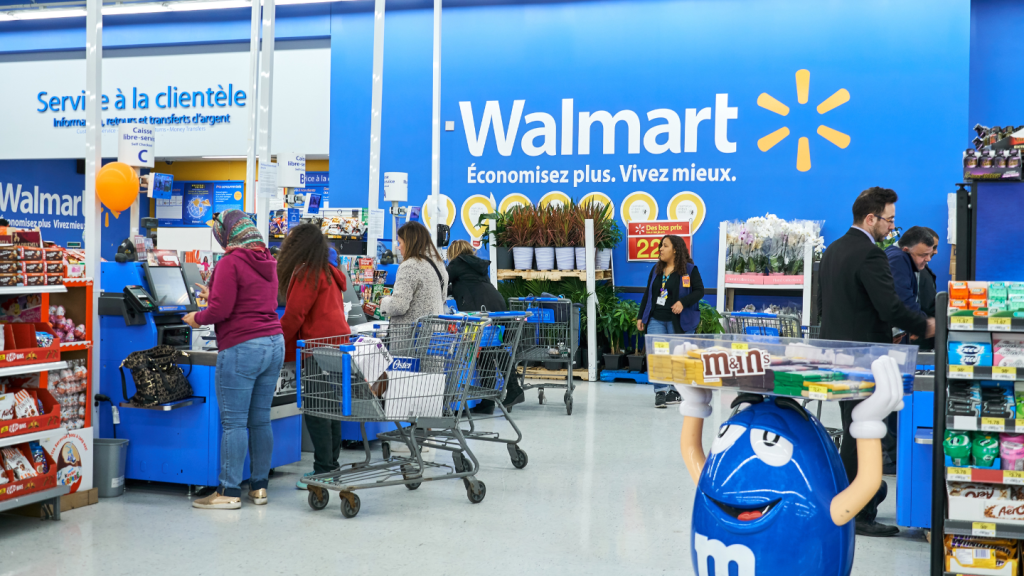Nestlé’s tweak to its organic growth outlook yesterday (25 July) wasn’t exactly a cliff-dive event but it has raised questions over when the company could return to its historical pace.
A downgrade for fiscal 2024 from “around” 4% to “at least” 3% at the halfway stage came somewhat as a surprise, as did, to a lesser degree, the cut to EPS guidance from 6-10% to a mid-single-digit range.
The shares reacted accordingly – down as much as 4% late in European afternoon trading yesterday (25 July) – even though a key volume-mix metric marked a return to positive territory. The shares were down another 2% today.
A rebound in real internal growth (RIG) – which strips out the effect of pricing from organic growth to reflect changes in volume – after being negative for six of the previous seven quarters, might have been a surprise, had it not already been foreseen by CEO Mark Schneider. While market eyes focused on that event coming to fruition, eyelids fluttered to the mid-term growth target of 4-6%.
Schneider sought to assuage any concerns, framing the downgrade in the context of fragile consumer behaviour in what remains a testing pricing environment, even though Nestlé has switched to a volume-recovery strategy.
“As we enter the second half of the year, we remain confident of our RIG momentum but the pricing environment has become more challenging,” Schneider said in his pre-recorded remarks.
“The general context is that consumers are under pressure, driving higher price elasticity, particularly in the US market. Increasingly, this has contributed to pressure on pricing as consumers seek value.”
Schneider pointed to intensifying competition as both food manufacturers and retail private label scrummage for shelf space as they seek to restore volumes lost during the inflationary-linked price spike.
Competition intensifying
The inflated benefits to organic growth from pricing have started to fade in 2024, with a 4-6% pace more reflective of what Nestlé was seeing in the pre-pandemic era. Second-quarter organic growth slowed to 2.8% from 8% a year earlier, although an improved print from the 1.4% in the opening three months.
Over the first six months, it averaged 2.1%.
“The swing factor lately is increasing competitive intensity to address this environment. Retailers are competing for their share of a tighter consumer budget,” Schneider said.
“Food and beverage companies, in turn, are responding to a whole new level of promotional intensity across categories. We have seen pricing coming down faster and are now reflecting it in our outlook.”
The pricing environment has become more challenging
Nestlé CEO Mark Schneider
Further out to the 2025 financial year, Schneider was reluctant to offer some insight into achieving 4-6% growth on a call with analysts.
Caught somewhat off guard by an unusual single question posed by one, Schneider said: “This whole notion of reestablishing mid-single-digit ‘25 is a mid-term goal of ours and remains that.
“Specifically for ’25, given how choppy the environment is, and how unforeseen some of the macro and geopolitical events are, I'd like to reserve that to the moment in time when we give the annual guidance, and that is February next year.”
Schneider stressed that Nestlé is more than capable of achieving a 4-6% rate if inflation is taken out of the equation, while the IT integration disruption of the Nestlé Health Science (NHS) vitamins and supplements division is now largely water under the bridge.
“As the inflation situation now is rapidly normalising, you should have confidence that the portfolio overall is capable of delivering that mid-single-digit range,” he explained.
“What you've seen since we made that statement in 2020, is you've seen some years where due to Covid and due to inflation, we've been significantly north of that. And now as we're coming out from that significant inflation spike, you're seeing a year where we're in at least 3% organic growth guidance.”
RIG offsets
The rebound in RIG is being aided by product innovation and “renovation”, where 15% more launches have been completed so far this year than in 2023, with a 20% increase targeted for the full year.
RIG measured 2.2% for the quarter and 0.1% for the first half. It was minus 2% in the opening three months and a negative 1.1% in the same period last year.
Analysts at Barclays described the offset of an improvement in RIG with a growth downgrade as “one step forward, two steps back”, although they forecast an uptick in quarter three to 3.9%.
Warren Ackerman wrote: “Nestlé finds itself in uncharted waters, lowering their OSG and EPS guidance simultaneously even after a significant QoQ RIG improvement. There is evidence in RIG momentum to come but the market is focused on continued 'one-off' impacts and intense promotional environment.”
While from a category and geography perspective we believe Nestlé remains well positioned over the medium term, the visibility of delivery and consistency needs to improve
Warren Ackerman, Barclays
Ackerman suggested improvements in RIG alone are not enough to compensate for the slowdown in pricing in order to get to at least the 4% marker. Pricing was 2% for the half and just 0.6% for the quarter.
“The market wants more than RIG momentum to continue, they need to see ‘one-off’ impacts disappear, a US consumer improving and evidence that the growth engines Nestlé have historically reliably leaned on before (coffee, pet, nutrition, NHS) can support the FY-25 guidance to align with the medium-term guidance of mid-single-digit organic sales growth,” he added.
“While from a category and geography perspective we believe Nestlé remains well positioned over the medium term, the visibility of delivery and consistency needs to improve.”
Consumer “stress”
It was observed by one analyst on yesterday’s call that while Nestlé is giving up price to recover volume the impact has not been that stellar.
Schneider countered: “It's very important that we do not over-interpret this snapshot here of Q2 2024. This is a very particular moment in time with some tricky year-over-year comparisons.
“Also, a moment in time where we're still seeing significant value-seeking behaviour on the part of the consumer, their stress, in particular the lower-end of the income scale in North America, but also in select other geographies.
“RIG needs to be earned through compelling product and brand propositions going forward. If you see it as straight price to buy RIG it is an oversimplified picture and doesn't do justice to the true situation.”
CFO Anna Manz chipped in to say that the “swing” in RIG in the US alone in the second quarter was “substantial” and a “real turnaround” – an increase of 860 basis points from minus 5.8% in quarter one to a positive 2.8%, she said.
However, much of that was due to promotional spending ahead of the 4 July Independence Day holidays and Manz suggested the performance won’t likely be repeated in the coming quarters.
“The impact of the phasing of orders in zone North America in Q2 was about 100 basis points of that 860 basis-point swing, so it's not material from a group perspective,” she said.
“This phasing impact means that the zone’s continued RIG improvement won’t be linear in the second half.”
Nestlé’s so-called “billionaire” brands – accounting for 70% of sales - are leading the charge, registering 3.2% organic growth across the first half, which was 110 basis points ahead of the group, Manz said.
She added that gross margin development – 160 basis points in the half to 47.2% - will also support “growth initiatives as we switch gears from price to RIG-led growth”.
However, Manz said that despite some “favourable input-cost prices” in commodities, cocoa and coffee remain elevated, which may filter through to selective price increases in the second half. Consequently, gross margin is likely to be lower in the back half.
“There's a phasing difference between H1 and H2 but we're seeing that gross margin improvement over the year as a whole, and we will continue to see rebuilding of our gross margin over time as we work through what's been a really unusual period,” Manz explained.
Barclays, which lowered its organic growth forecast from 3.6% to 3.2%, suggested the 2024 market consensus is a margin end print of 46.6%. The bank also cut its pricing estimate for the year from 2.2% to 1.6% but boosted its RIG bet by 20 basis points to 1.6%.
Schneider explained the importance for Nestlé of getting RIG moving north again but the trajectory over the past eight quarters has not been linear.
“It was so important for us to also get that real internal growth flywheel running again because as inflation peaked and came down, there was a period of six to seven quarters with weak RIG development and at times negative volumes, and clearly what you don't get then for the business is operational leverage.
“Getting the flywheel running again, having a convincing RIG performance for Q2, and also a continued positive RIG outlook for the business, is important because it gets the operational leverage going again."
















